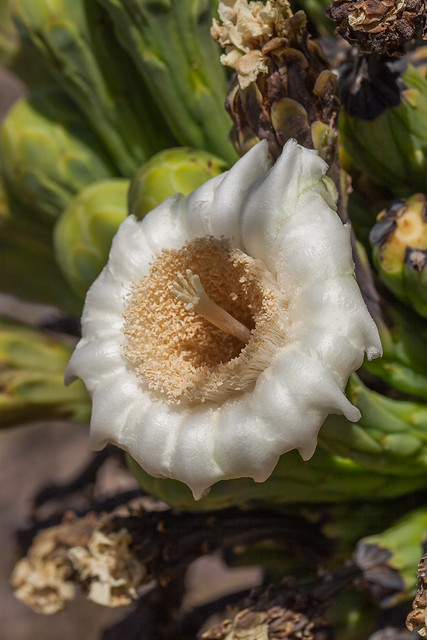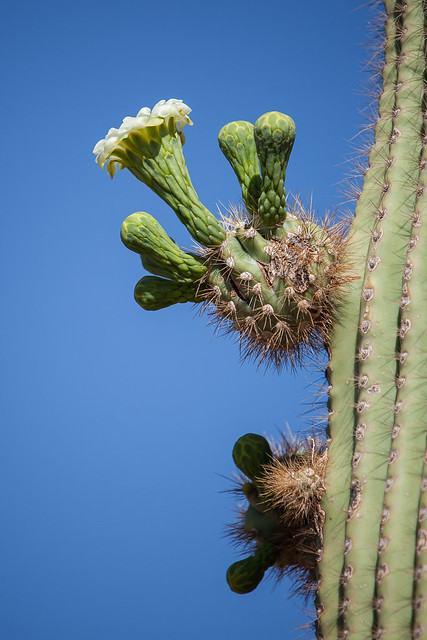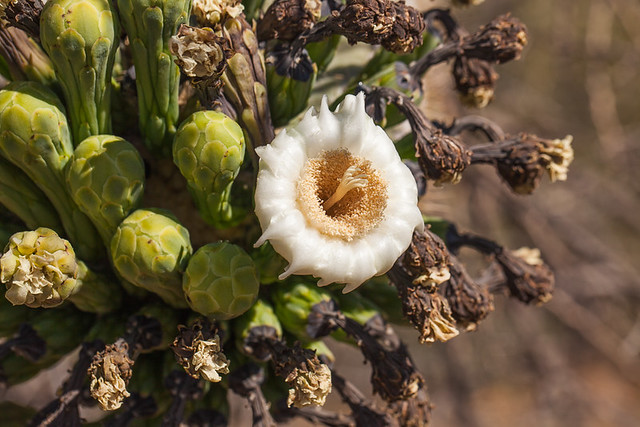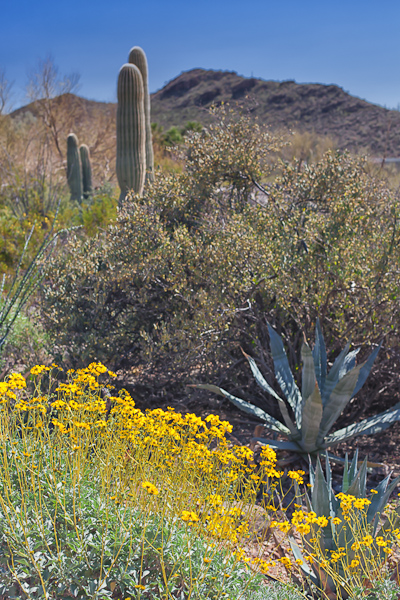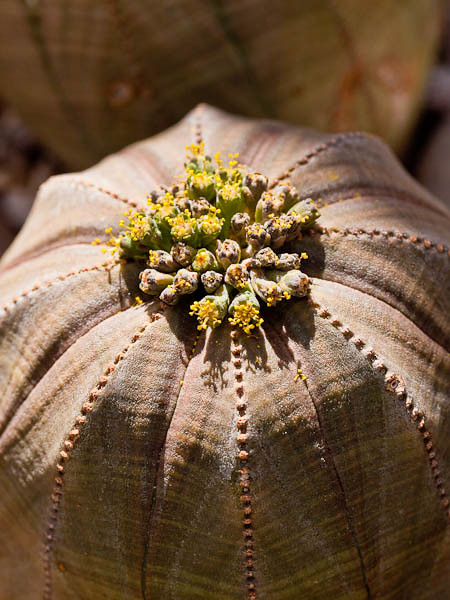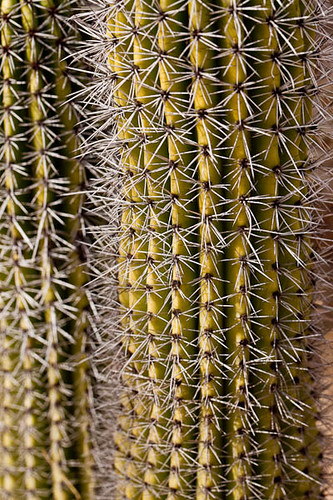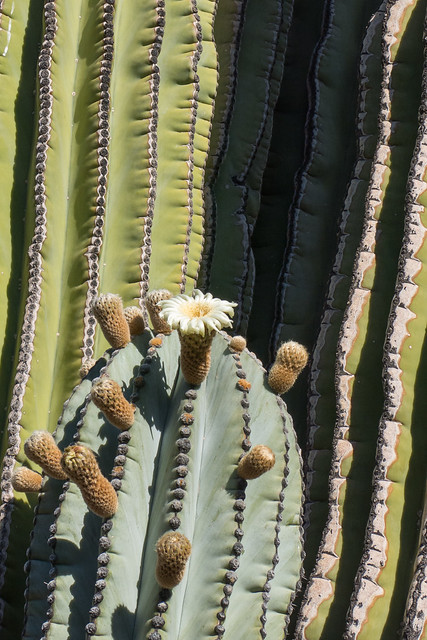
Cardon Cactus in Bloom © 2014 Bo Mackison
Not a saguaro , but a relative!
The giant cardon cactus dominates many of the deserts of Baja California and the coastal region of the state of Sonora in Mexico. It is closely related to the saguaro of Arizona and Sonora, but cannot tolerate cold (unless carefully protected) so these two giant cacti occupy different geographical regions.
This specimen was in bloom at the Desert Botanical Garden in Phoenix on a visit in March, and it was my lucky day. It was the first of the year’s blooms.
